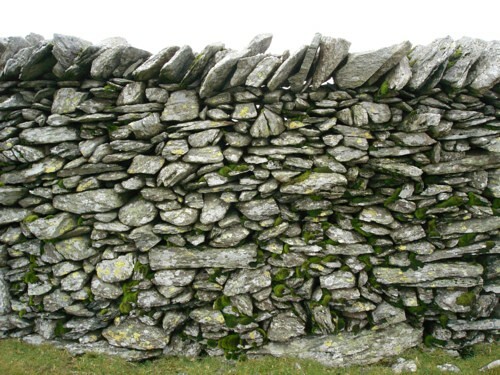Rubble is broken stone of irregular size, shape and texture. ‘Rubble’ derives from rubbish. Masons make good use of this garbage.
Rubble masonry is rough, irregular unhewn building stone not laid in regular courses. It may appear as the outer surface of a wall, or may be used to fill a wall.
Many thick walls which appear as solid stone are commonly filled with rubble. It is almost counter-intuitive; that a massive wall -the very symbol of solidity- is often filled with rubble. There is much more rubble in many more exquisite masonry buildings, from The Pantheon, to cathedrals to the Taj Mahal, than most people realize.
The Great Wall of China is made mostly from rubble, which was used to fill the space between the outer bricks and below the road’s surface.
Dry stacked stone walls rely on strategically placed and compacted rubble to help bind the masonry elements together into a consolidated mass. Good rubble will have a size distribution (big and small chunks) for space filling. Proper use of rubble in dry stacked stone walls is an art.







No comments:
Post a Comment